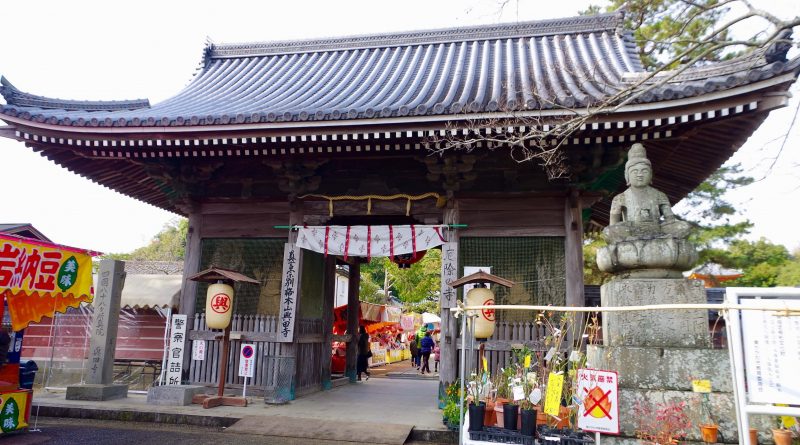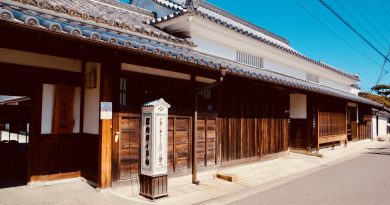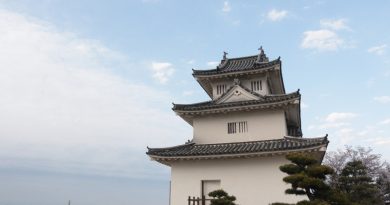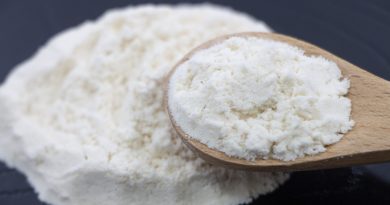Yodaji temple – a temple repelling disease and misfortune
The Shikoku Pilgrimage includes 88 temples to visit, completing the journey through all the temples is called Kechigan(結願). Besides, some pilgrims go back to the first temple from the last temple, this pattern is called Mangan(満願). The route that lots of people chose for their pilgrim starts at the Ryozenji temple (No.1 temple located at Naruto city, Tokushima) all way to the Okuboji temple (No. 88 temple located at Sanuki city, Kagawa) traveling in the clockwise order.
After achieving the Kechigan, there are many routes that pilgrims can choose to walk back to Ryozenji temple and complete the Mangan. One of them crosses through the Osakatouge (大坂峠), the border between Higashikagawa city and Tokushima’s Naruto city, and continues along the coastline of the Higashisanuki (the east Kagawa). In the 7th century, Osakatouge was the main road used by the locals in Sanuki (Kagawa prefecture nowadays) to go to the Kansai area by boat, as they needed to reach from Sanbonmatsu port located at Higashikagawa city first.
Yodaji temple (Higashikagawa city) is famous for its power to get rid of people’s misfortunes and is deeply related to the Kobodaishi and the Shikoku Pilgrimage.
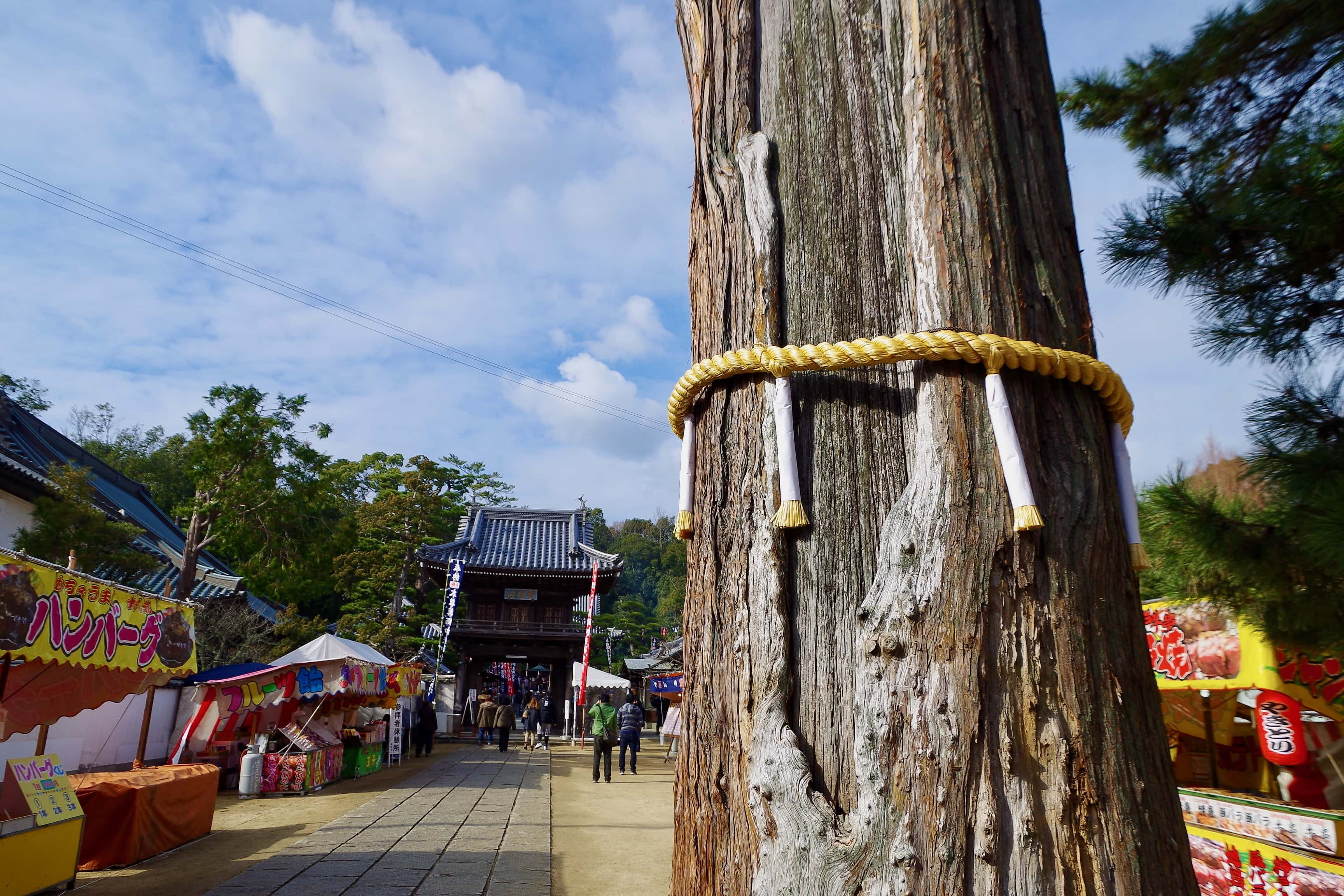 In Japanese Buddism, some specific sects call their temple Honzan (本山) with special standing, and the dependent temples are called Matsuji (末寺).
In Japanese Buddism, some specific sects call their temple Honzan (本山) with special standing, and the dependent temples are called Matsuji (末寺).
It is said that Yodaji temple was built in the Nara period by the famous monk named Gyoki in 739. Yodaji temple belonged to East Asian Yogacara but switched the Shingon Buddhism because of Kukai’s influence. Nowadays Yodaji temple, belonging to the Shingon Buddhism Zentsuji sect, has a special standing called Bekkaku-honzan (special head temple). During the Kamakura period, because of the improvement made by the monk Soun, Yodaji temple became a huge temple that had over one thousand Matsuji in Sanuki province in the late 13th century.
At that time, pilgrims finishing the Kechigan and traveling back to the Kansai area by boat leaving from Sanbonmatsu port would visit Yodaji temple on their way. Therefore it also earned the honor name of main Okunoin (inner sanctuary) of the 88 temples of Shikoku Pilgrimage.
The Medicine Buddha and the stone steps for getting rid of the misfortunes
People said that the Medicine Buddha worshiped in the Yodaji temple was made by Gyoki. The medicine pot held in the left hand, feature of Medicine Buddha, is said to contain medicine powerful enough to cure any diseases. In the 88 temples of Shikoku Pilgrimage, there are 23 temples worshiping the Medicine Buddha. In the past, praying for curing illness and for good health were one of the purposes for those walking the Shikoku Pilgrimage.
Another one was to get rid of the misfortunes. It was believed that people visiting Yodaji temple could get rid of their bad luck and cured, so the Yodaji temple became the most famous temple for getting rid of the misfortunes in the east Sanuki area.
In Japan, there are some years called Yakudoshi (厄年) which means people born in a certain year will get many disasters for this year. According to the East Asian age reckoning, Japanese believe that women in their 33 year, men in their 42 year, and both men and women in their 61 year will encounter lots of misfortunes and diseases. People then should go to temples or shrines and under a ritual to be spare and protect by the gods. This ritual is called Yakuyoke (厄除け) in the temples but is called Yakubarai (厄払い) in the shrines.
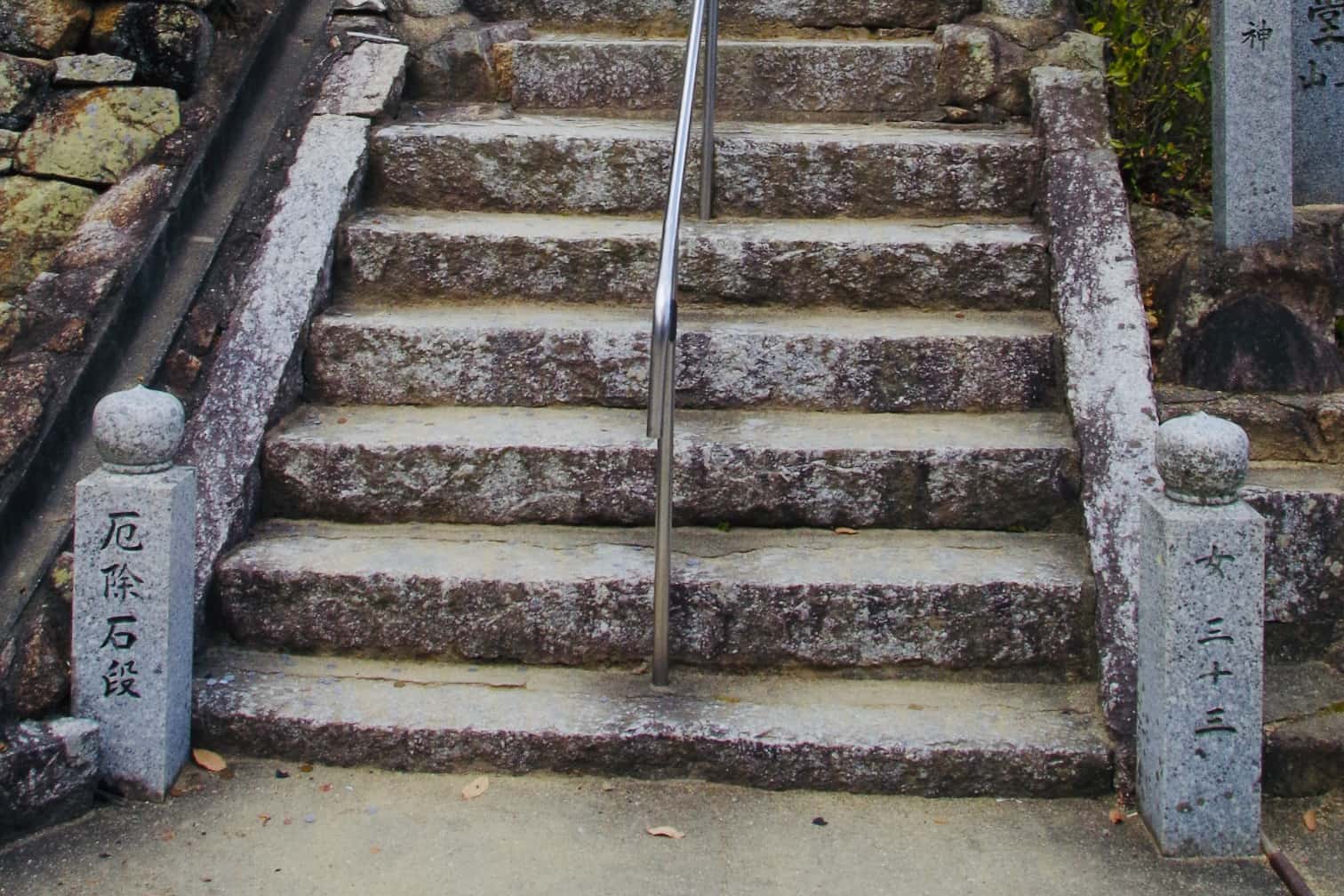
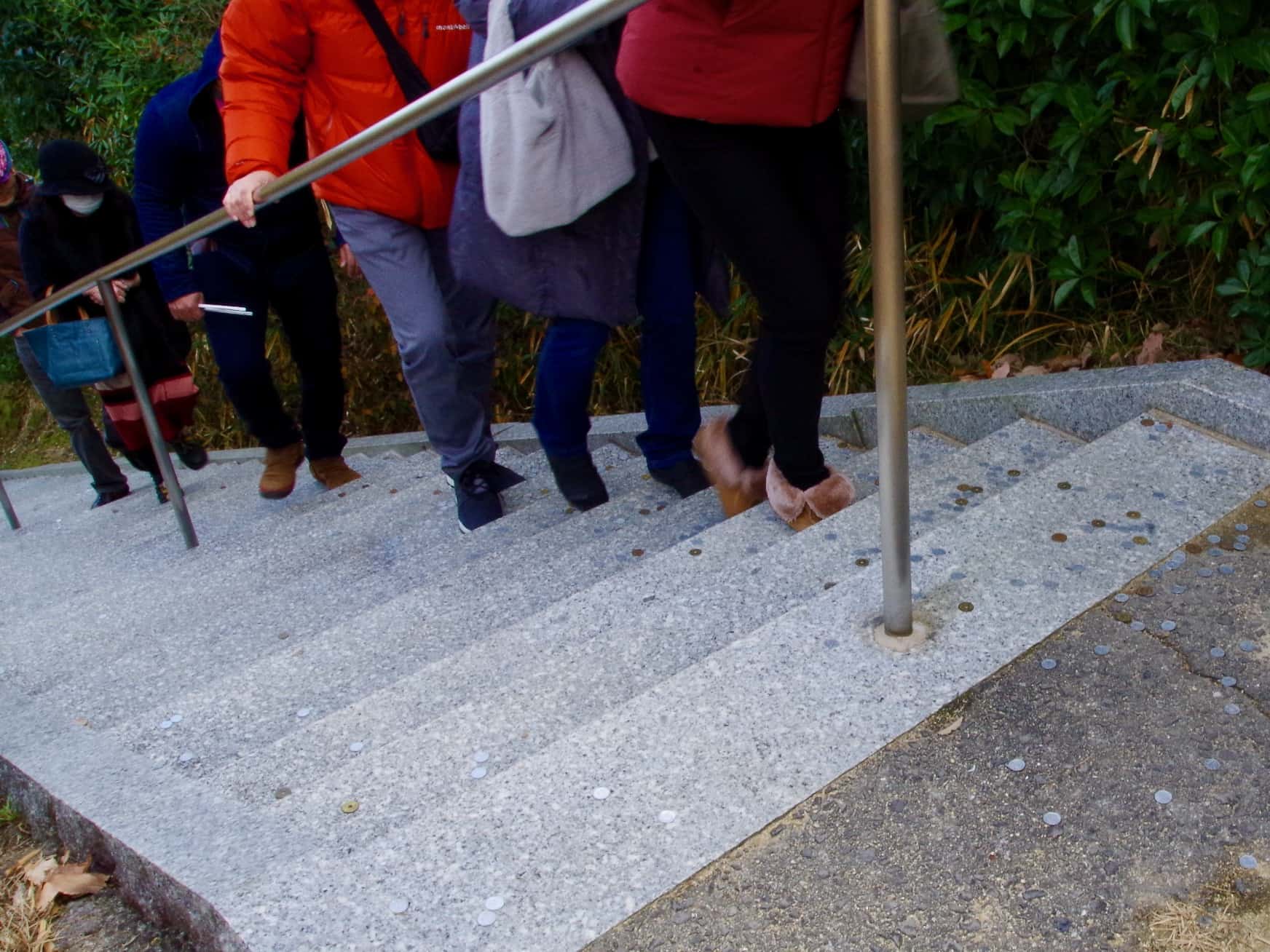 At the right side of the Yodaji temple’s main hall, there are three kinds of stone steps for people to repel misfortunes including 33 steps for woman, 42 steps for man, and 61 steps for both. People of the Yakudoshi then prepare the same numbers of coins as their age. One coin is thrown for each step, and the mantra of Medicine Buddha recited as well, to seek help from the Medicine Buddha and eliminated the disasters.
At the right side of the Yodaji temple’s main hall, there are three kinds of stone steps for people to repel misfortunes including 33 steps for woman, 42 steps for man, and 61 steps for both. People of the Yakudoshi then prepare the same numbers of coins as their age. One coin is thrown for each step, and the mantra of Medicine Buddha recited as well, to seek help from the Medicine Buddha and eliminated the disasters.
The homa ritual
The doctrine of Shingon Buddhism is Sokushinbutsu (即身成仏) which believes that it is possible to attain Buddhahood by ascetic practices in the whole life with no need to abandon the carnal body. However, people will be tortured by lots of klesha (evil passion) in life, and homa(護摩) is the only method to get rid of them. In Sanskrit, homa means burning.
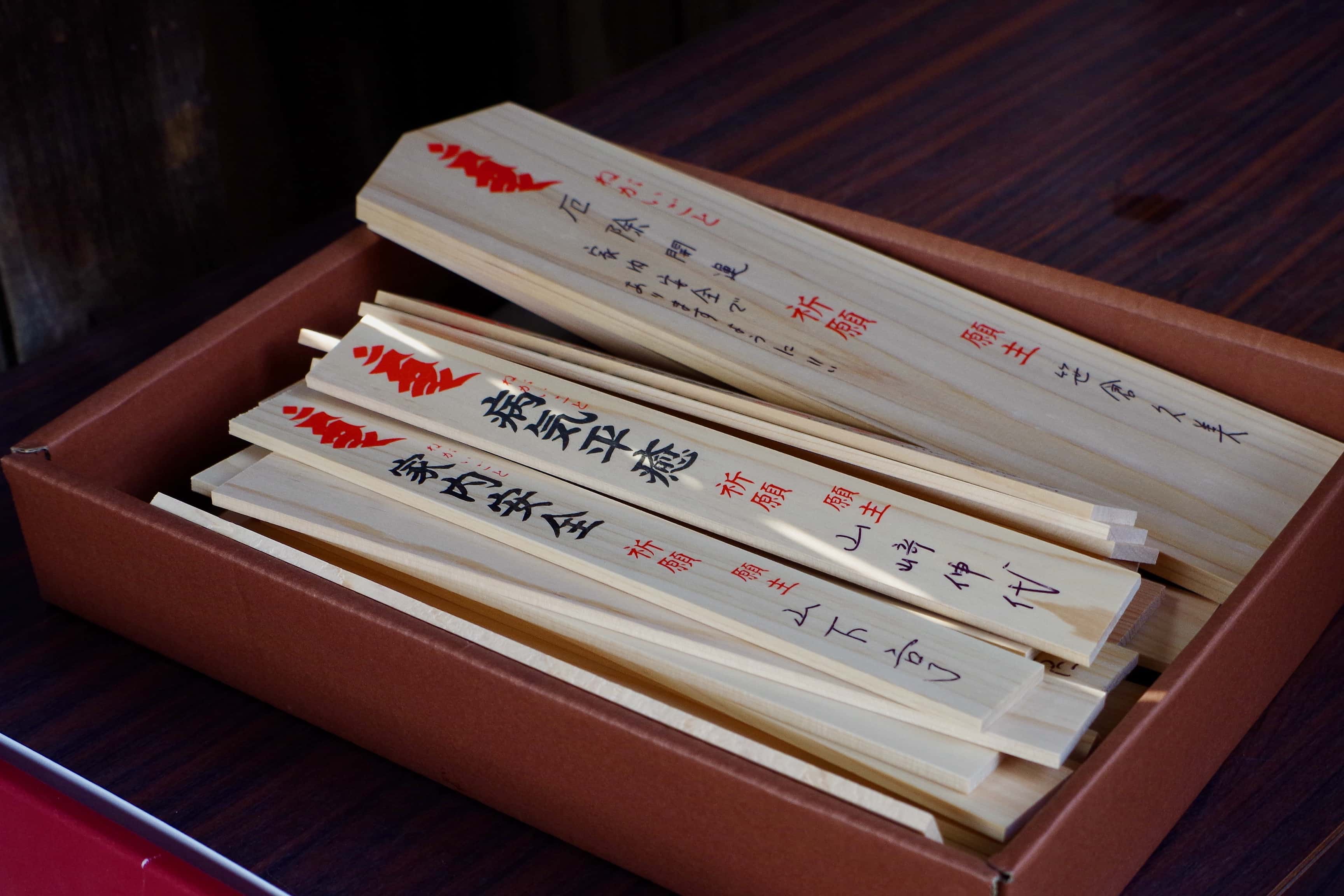 The homa ritual is usually held by Shingon and Tiantai Buddhism which belong to Esoteric Buddhism in Japan. The homa ritual of Shingon Buddhism uses people’s evil passion and wishes as firewood, and burns everything into the wisdom fire from Vairocana who has the highest level in Buddhism, then passes the klesha and wishes to various buddhas through the smoke. Once believers write the wishes on the homa sticks, the temple’s monk uses the Saitou (柴燈), the votive fire which is commonly use in the temple and represent the God’s light, to set on fire the altar and burn homa sticks praying for the people and their wishes.
The homa ritual is usually held by Shingon and Tiantai Buddhism which belong to Esoteric Buddhism in Japan. The homa ritual of Shingon Buddhism uses people’s evil passion and wishes as firewood, and burns everything into the wisdom fire from Vairocana who has the highest level in Buddhism, then passes the klesha and wishes to various buddhas through the smoke. Once believers write the wishes on the homa sticks, the temple’s monk uses the Saitou (柴燈), the votive fire which is commonly use in the temple and represent the God’s light, to set on fire the altar and burn homa sticks praying for the people and their wishes.
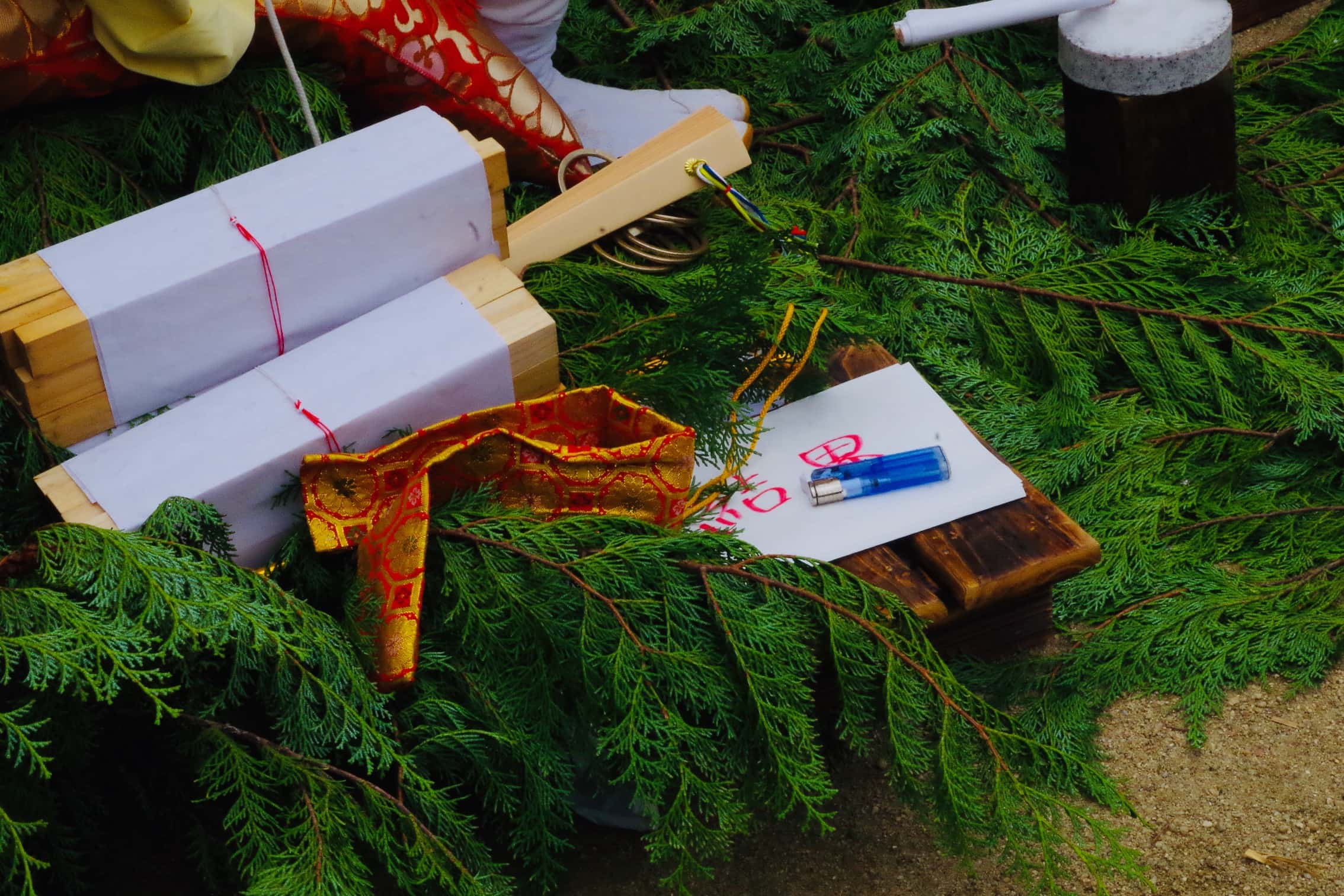 Each Shingon Buddhism temple has different date to hold homa ritual. For example, Shidoji temple No.86 holds the ritual on May 12th, and Okuboji temple No.88 holds it on March 21th and August 11th. The homa ritual can be held indoors and outdoor. However indoor, the homa ritual takes place in the homa hall with the altar, and it is called Dangoma (壇護摩). While for outdoor ritual, monks set an open-air altar for burning offerings and homa sticks, and it is called Saitougoma (柴燈護摩).
Each Shingon Buddhism temple has different date to hold homa ritual. For example, Shidoji temple No.86 holds the ritual on May 12th, and Okuboji temple No.88 holds it on March 21th and August 11th. The homa ritual can be held indoors and outdoor. However indoor, the homa ritual takes place in the homa hall with the altar, and it is called Dangoma (壇護摩). While for outdoor ritual, monks set an open-air altar for burning offerings and homa sticks, and it is called Saitougoma (柴燈護摩).
Yodaji temple holds the homa ritual on January 3rd each year, and all the ritual is executed by Yamabushi (山伏, the mountain ascetic).
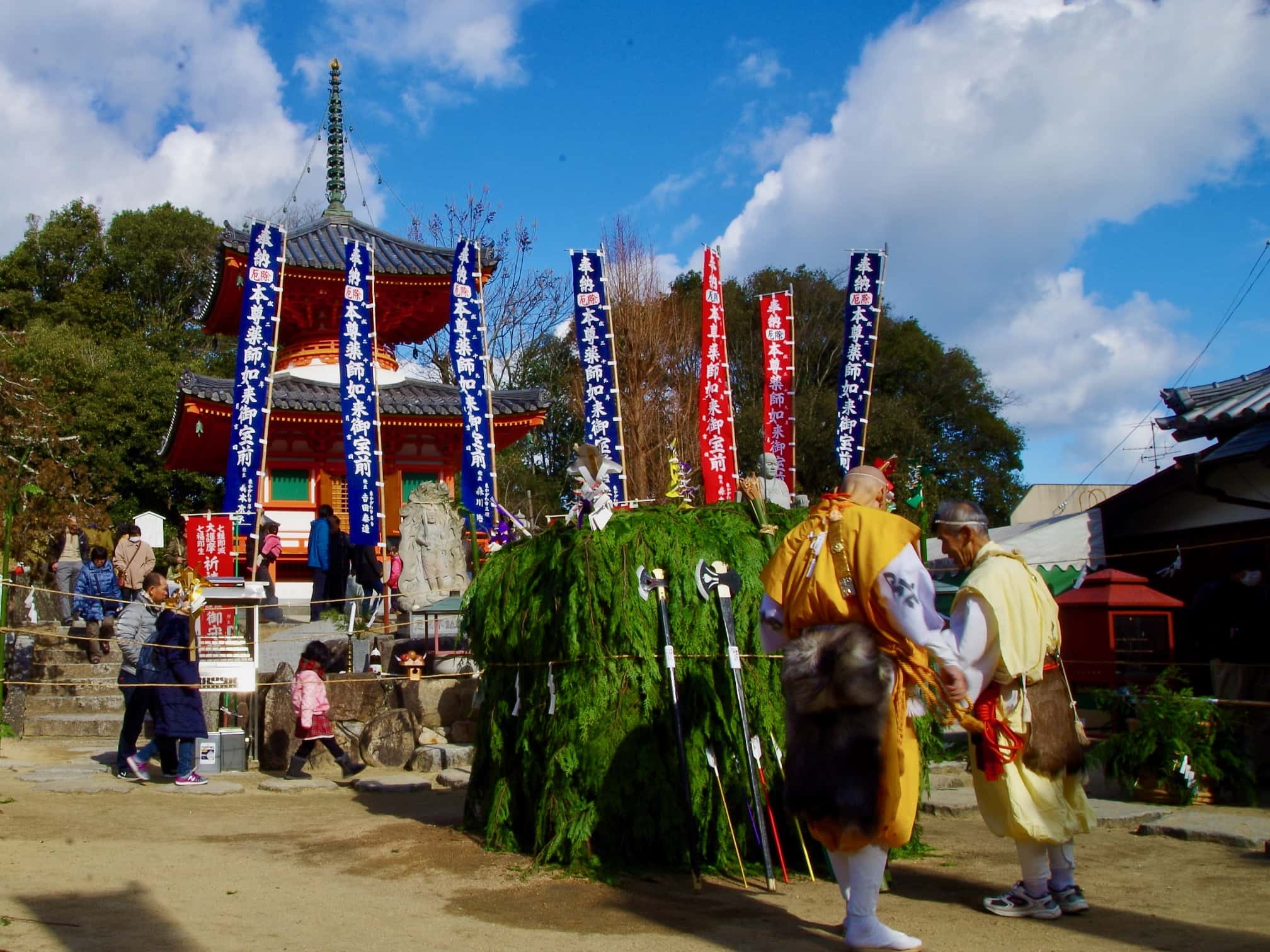 Shugendo, created by Kukai, is a Buddhism sect combining Shingon Buddhism with Japanese Shinto. The ascetics who follow the doctrine and took training in the sacred mountain are called Yamabushi. Yambushi belong to takai (他界) which means the world after death. Japanese believe that Yamabushi have spiritual power and can shuttle between this world and the world after death.
Shugendo, created by Kukai, is a Buddhism sect combining Shingon Buddhism with Japanese Shinto. The ascetics who follow the doctrine and took training in the sacred mountain are called Yamabushi. Yambushi belong to takai (他界) which means the world after death. Japanese believe that Yamabushi have spiritual power and can shuttle between this world and the world after death.
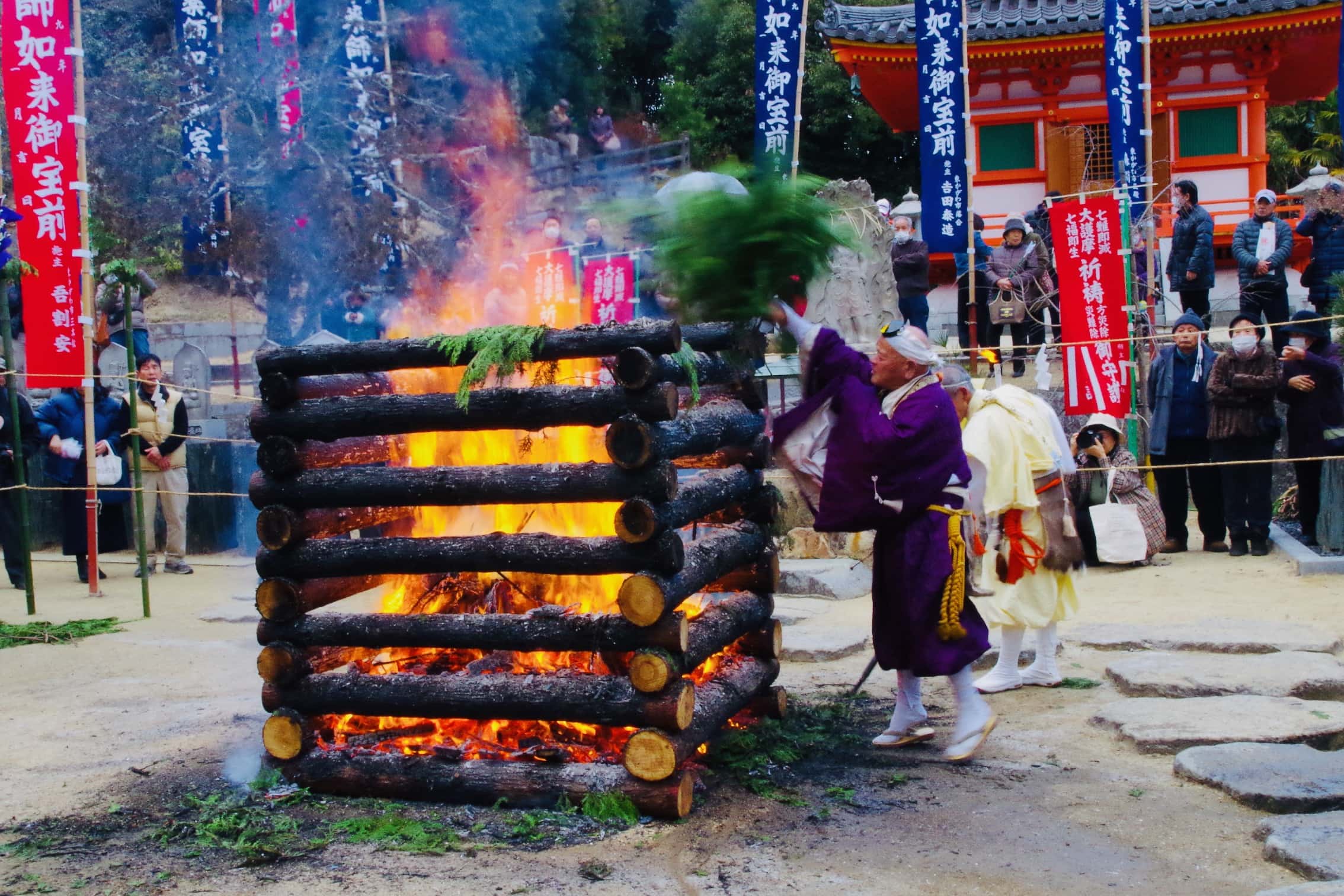 In the homa ritual, you can see Yamabushi blowing the conch-shell trumpet, reciting sutra, and throwing homa sticks into the burning altar.
In the homa ritual, you can see Yamabushi blowing the conch-shell trumpet, reciting sutra, and throwing homa sticks into the burning altar.
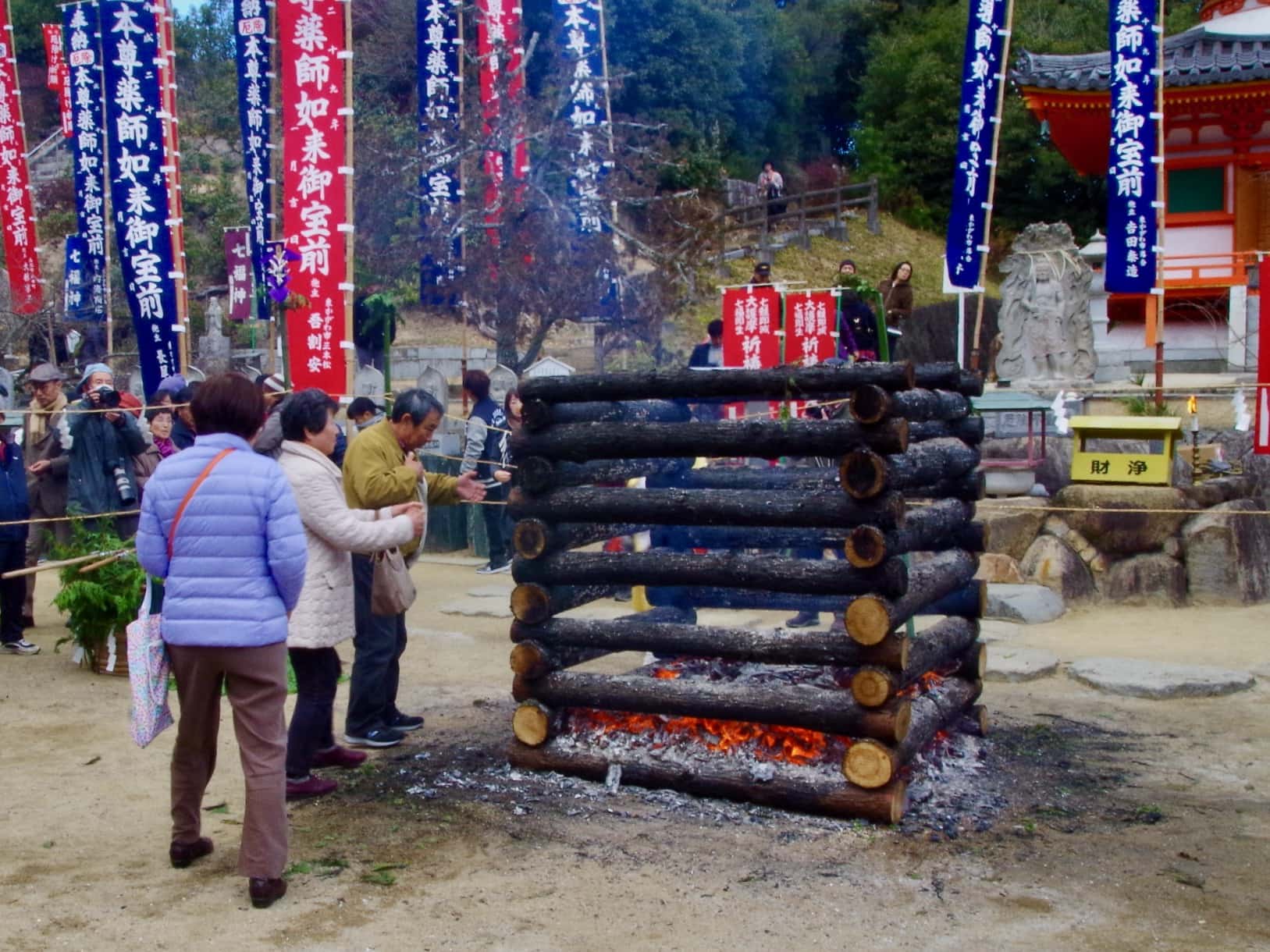 After homa sticks were burned, believers can get close to the altar and fan the white smoke to themselves to get rid of misfortunes and call happiness upon themselves.
After homa sticks were burned, believers can get close to the altar and fan the white smoke to themselves to get rid of misfortunes and call happiness upon themselves.
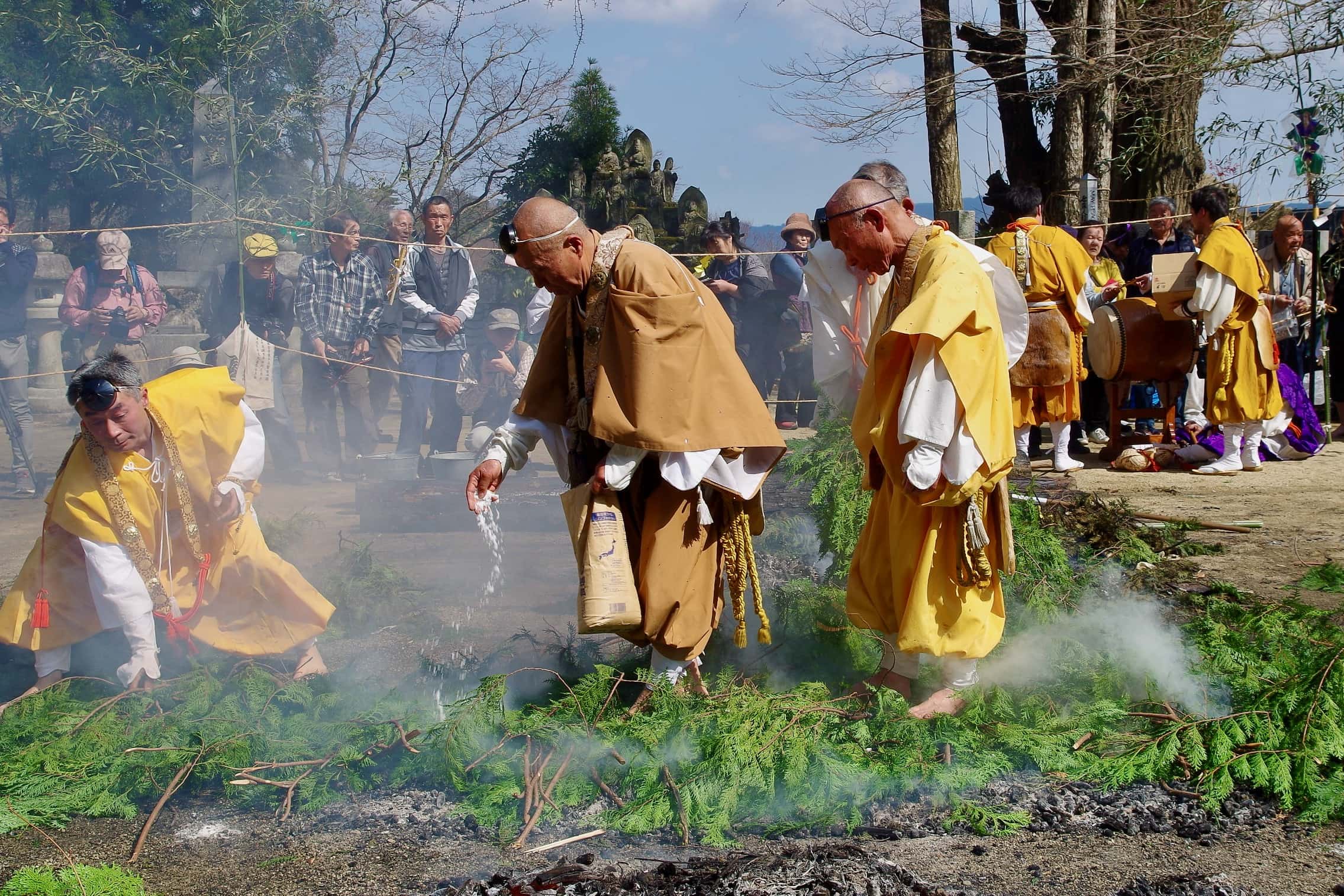 Some temples, like Okuboji temple, will let believers walk across the fire to repel the disasters that may await them.
Some temples, like Okuboji temple, will let believers walk across the fire to repel the disasters that may await them.
In New year’s holiday, many people will go to temples and shrines to pray for good luck for the year. If you have the chance to visit the temple of Shingon Buddhism, it is recommended to write a homa stick to make you get a lucky and safe new year.
INFORMATION
Access: Take 25-minute walk from JR Sanbonmatsu station or 5 minutes by taxi.
- Address: 〒769-2605 香川県東かがわ市中筋466番地
- Business hours: Treasure museum 9:00~16:00 (reservation needed, JPY300円, closed on New Year’s Holiday)
- Closed on: Open all year round.
- TEL: +81-87-925-4726
- Wi-Fi: N/A
- Language: Japanese
- Credit card: N/A

